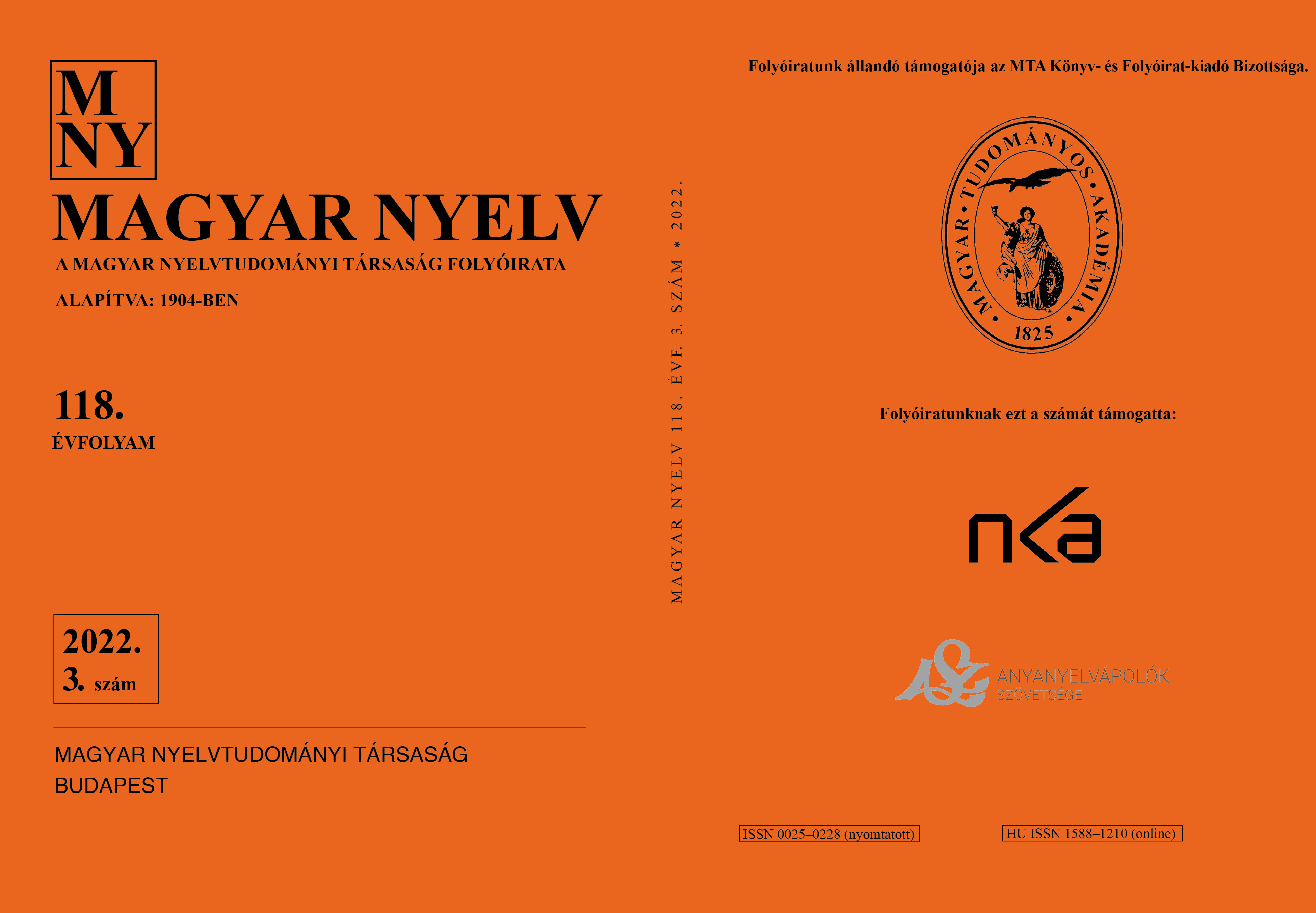Language variability in trans-border Hungarian dialects
DOI:
https://doi.org/10.18349/MagyarNyelv.2022.3.257Keywords:
language variability, trans-border Hungarian dialects, contact variants, formal loanwords, variants of direct loanwords, hypercorrect forms, back-borrowed lexemesAbstract
The aim of the present paper is to show the relationships between trans-border Hungarian dialects and language variability. In the theoretical part of the paper the authors review formal loanwords, hypercorrect forms, variants of direct loanwords and back-borrowed lexemes of Hungarian used in Slovakia and Romania. The practical part of the paper presents and analyses such Slovakian and Romanian examples which were included in the revised edition of A Concise Dictionary of Hungarian (ÉKsz.2), the Osiris Dictionary of foreign words, and the online dictionary of the Termini Research Network.
Downloads
Published
Issue
Section
License
Copyright (c) 2022 Gábor Lőrincz, Julianna Lőrincz, Tamás Török

This work is licensed under a Creative Commons Attribution-NonCommercial-NoDerivatives 4.0 International License.
Magyar Nyelv is a Diamond Open Access periodical. Documents can be freely downloaded and duplicated in an electronic format, and can be used unchanged and with due reference to the original source. Such use must not serve commercial purposes. In the case of any form of dissemination and use, Hungarian Copyright Act LXXVI/1999 and related laws are to be observed. The electronic version of the journal is subject to the regulations of CC BY-NC-ND (Creative Commons – Attribution-NonCommercial-NoDerivatives).
The journal permits its authors, at no cost and without any temporal limitation, to make pre-print copies of their manuscripts publicly available via email or in their own homepage or that of their institution, or in either closed or free-for-all repositories of their institutions/universities, or other non-profit websites, in the form accepted by the journal editor for publication and even containing amendments on the basis of reviewers’ comments. When the authors publicize their papers in this manner, they have to warn their readers that the manuscript at hand is not the final published version of the work. Once the paper has been published in a printed or online form, the authors are allowed (and advised) to use that (post-print) version for the above purposes. In that case, they have to indicate the exact location and other data of the journal publication. The authors retain the copyright of their papers; however, in the case of an occasional secondary publication, the bibliographical data of the first publication have to be included.



